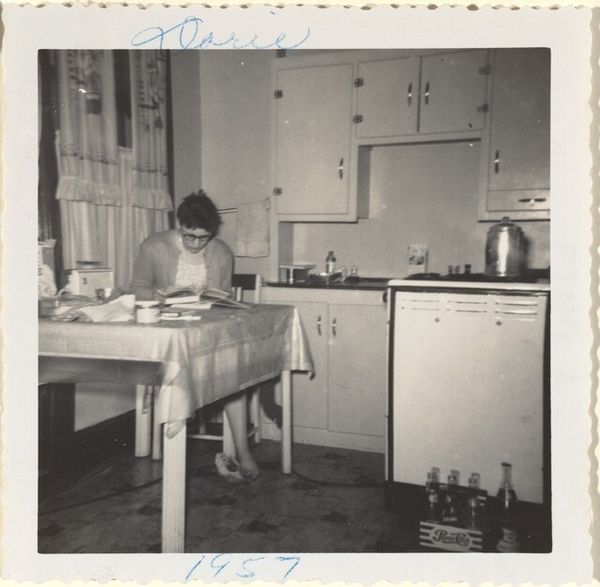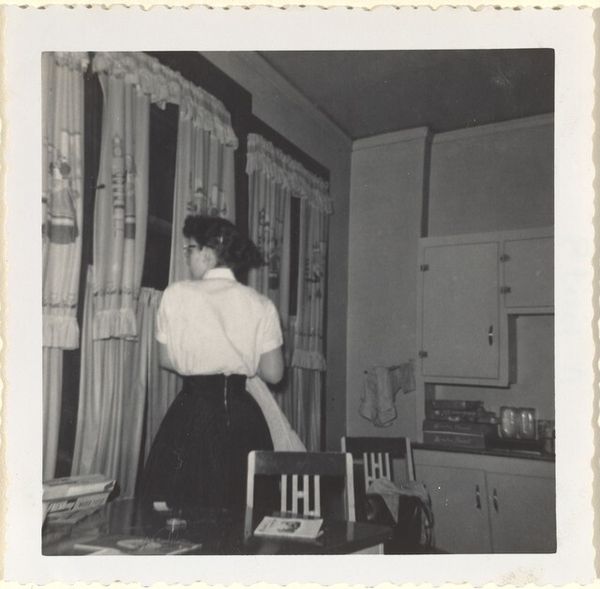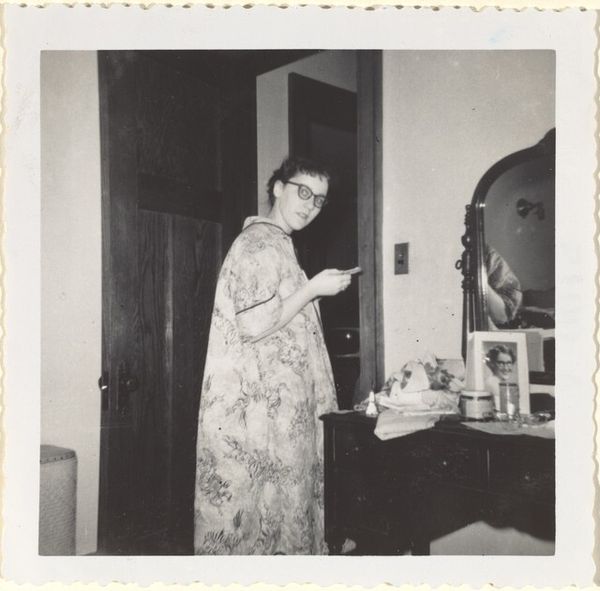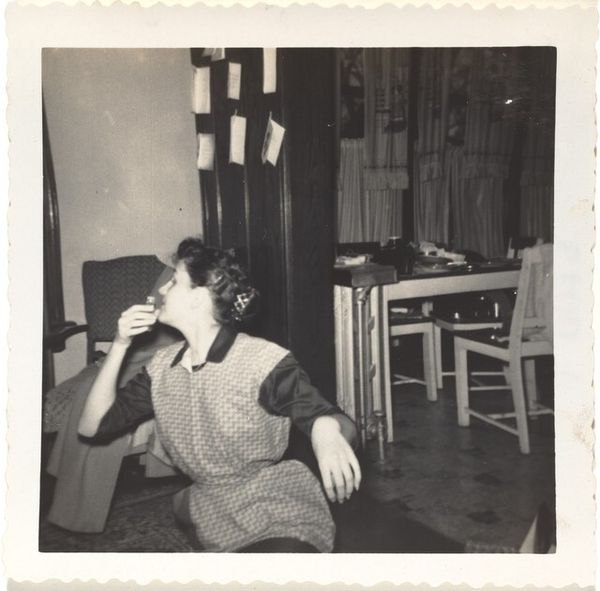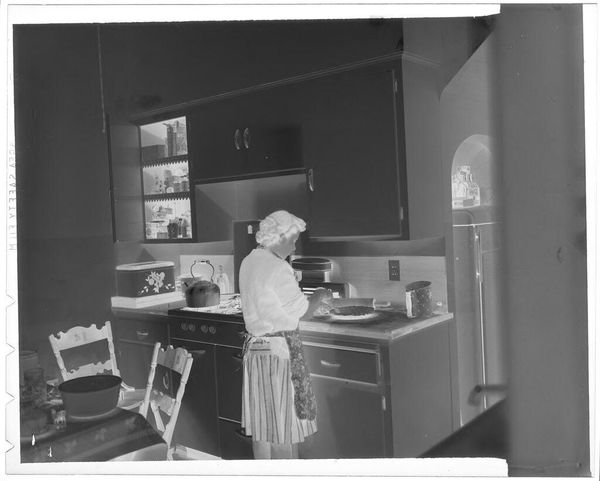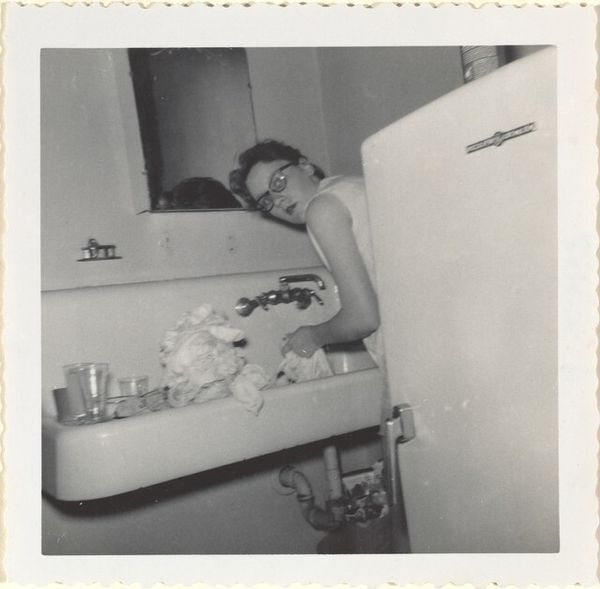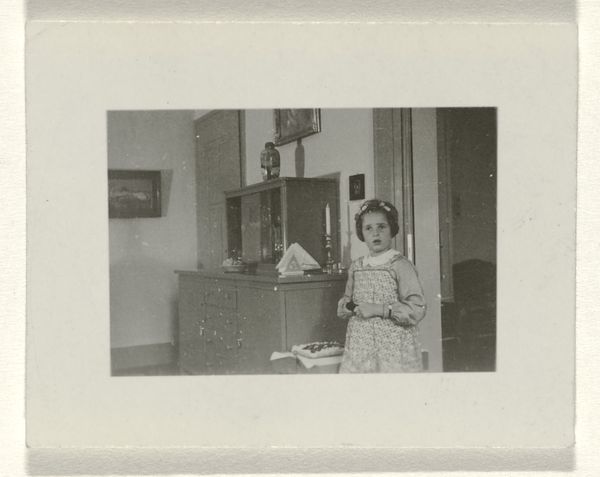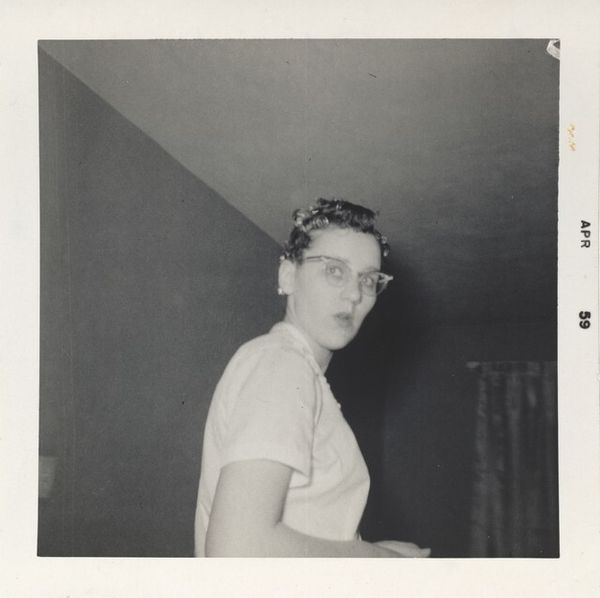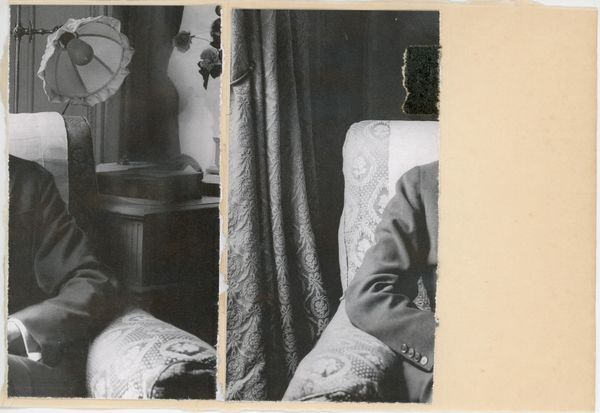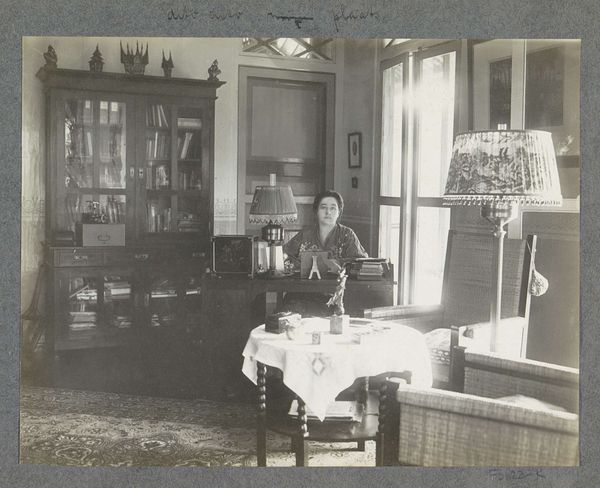
photography, gelatin-silver-print
#
print photography
#
archive photography
#
photography
#
historical photography
#
gelatin-silver-print
#
genre-painting
#
modernism
#
realism
Dimensions: image: 7.6 x 7.8 cm (3 x 3 1/16 in.) sheet: 8.8 x 9 cm (3 7/16 x 3 9/16 in.)
Copyright: National Gallery of Art: CC0 1.0
Editor: This gelatin-silver print, titled "Lois Weiker, 11/26/55", captures a domestic scene in someone's kitchen. It's simple, a snapshot of everyday life. What can you tell me about it? Curator: The gelatin-silver process itself is interesting. It was the dominant photographic process for much of the 20th century, and we see it here, a mass-produced method capable of capturing a specific time. But look beyond the surface. What is Lois Weiker doing? The photograph gives no details of the action. Is she a home-maker, occupied in the home as a full-time role? Editor: She's at the counter. There are jars…maybe spices. It seems mundane, yet the date gives the work value, maybe as documentation of the labor and roles during the era. Does that elevate this beyond a simple snapshot? Curator: It's not simply a portrait of a person, it shows domestic labor, made evident in objects like the containers on the counter, their materiality a result of industrial design. Who owned them, who produced them, how are the objects and domesticity linked? Consider how the labor of women in the household wasn’t considered "productive". By documenting her action, the photographer highlights something overlooked, that has use. Editor: That's interesting. The choice of the gelatin-silver print itself is a material commentary – using a mass-produced method to document daily life, even if, as a medium, this image wasn't designed to critique women in society. Curator: Exactly! This piece is not necessarily high art, and isn't even about one thing in itself. Instead, it is in conversation about value and consumption. Editor: I see it now, thanks. Thinking about the medium, the setting, it frames a whole narrative of labour, class and culture. It all circles back to materials.
Comments
No comments
Be the first to comment and join the conversation on the ultimate creative platform.
